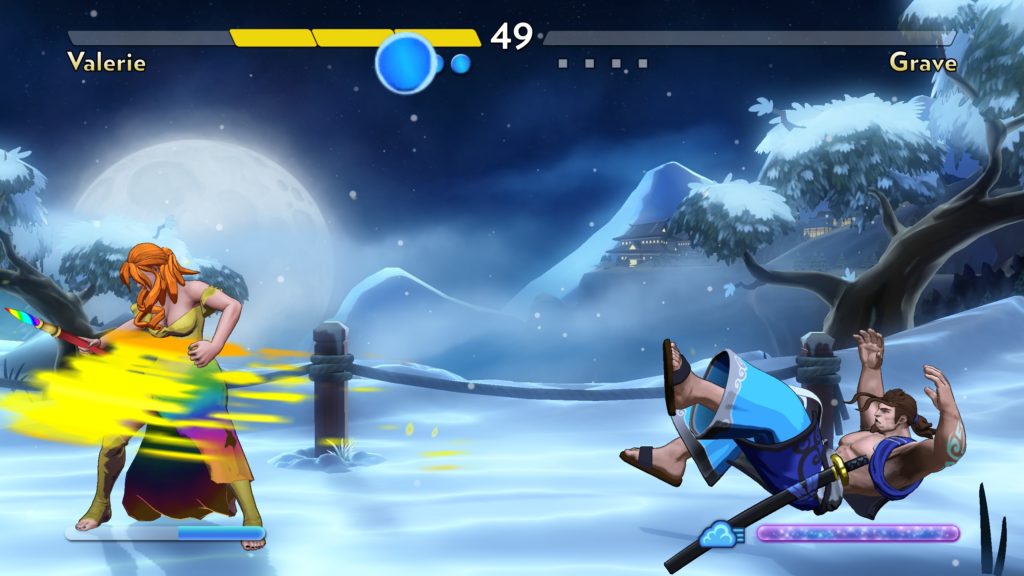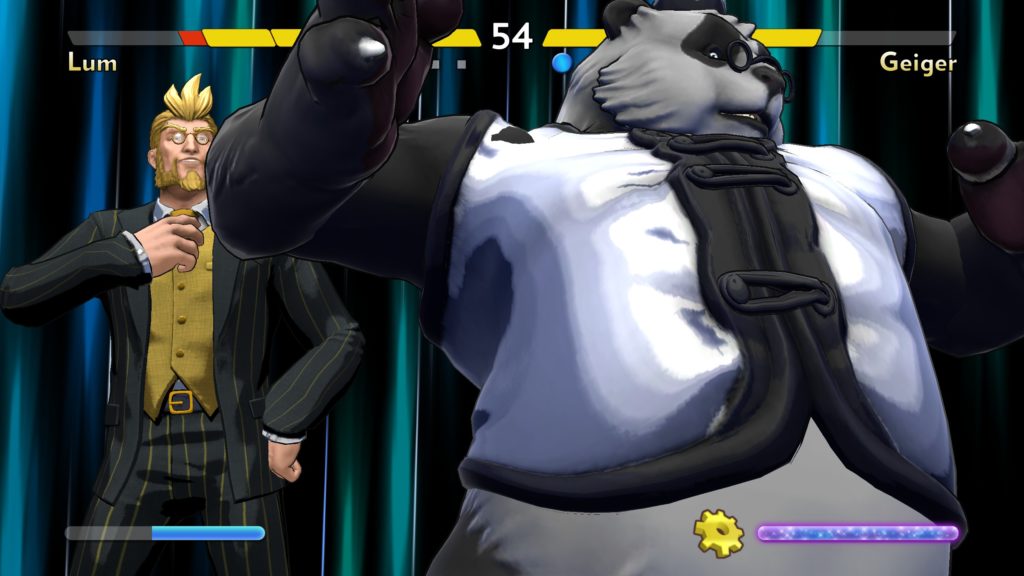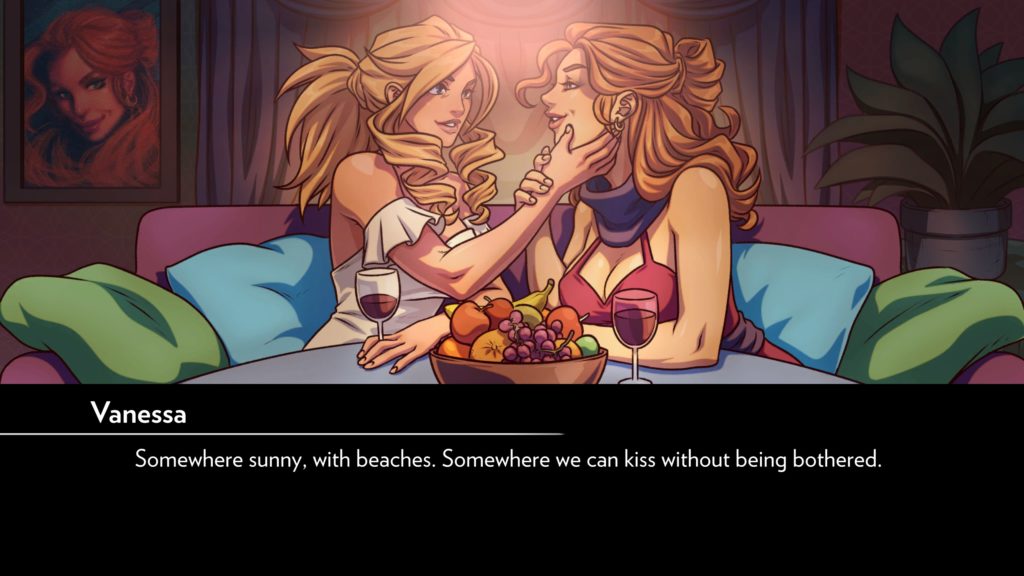Fantasy Strike (Review)

Source: Cashmoneys
Price: £23.79 (Soundtrack £6.79)
Where To Get It: Steam
Fighting games are sometimes difficult to learn. Sometimes, they’re also difficult to master. But sometimes, as in Fantasy Strike, they’re mainly difficult to master. Which I appreciate, even if a tutorial before you can even change the window settings is not something I appreciate. Still, let’s talk Fantasy Strike.

The philosophy behind Fantasy Strike’s fighting shenanigans is twofold: Firstly, to make a more accessible fighting game. But secondly, the game is all about David Sirlin’s favourite part of fighting games: Yomi.
It’s got multiple potential meanings, even in fighting games, but, essentially, the idea is that high level play involves reading your opponent well, so that you can adapt your strategies on the fly, be that conditioning your opponent into certain reactions (that you then punish with a different moveset), or simply knowing that an opponent likes a certain pattern, then punishing them for using it (It can go many ways, as you can see.) So, how does it do this? Well, multiple ways.
Firstly, there are a total of six buttons: One for light, one for heavy, two for specials, one for throwing, one for jump, and one for super moves. Also there is no crouching. Okay, that’s a relatively simple set up, especially since many characters don’t really have the need for both specials (although directional inputs change a fair few moves, as do, obviously, jumps.) There’s also a more limited health bar that gets chipped away if you block three attacks consecutively (some moves do double damage, such as Midori’s Dragon Throw, but most either deal one, or combo, so blocking it is effectively one damage, or two for not blocking.) It’s still somewhat twitchy, requiring good reactions and not button mashing to win the day, but that is, honestly, not bad. Enemies also flash various colours for invincibility frames (white), throws (blue), and special throws requiring a jump prompt to escape (green.) That still requires good reactions, but it is helpful.

Secondly, beyond the things that you normally do with the concept of Yomi (pattern punishes, baiting, jump cancels, etcetera), there is the concept of the Yomi Counter. Somebody wants to throw you, and normally this is tough to counter, but in Fantasy Strike, the way you counter it is by… Doing absolutely nothing. Not moving, not punching… Just very briefly letting go of the controls. In practice, this is something that still requires mastering the specific reaction needs of Fantasy Strike, but the mechanical theory, at least, is clever.
Finally, the game lets you know what kind of character you’re playing, and, like other fighting games, allows you to see the moveset. “Wild Card”, alas, is a needlessly nebulous term, as the two fighters in this category, DeGrey and Lum, still have overlap with other categories. Lum is a sort of zoner in practice with random items as his special, while DeGrey is a sort of meld of grappler (slow-ish, but hard hitting), and “doll” fighter, with his ghost friend being a ranged grapple. But the other categories of zoner (specialises in controlling the battlefield in some fashion, and making areas of the battlefield dangerous. By the way, no crouch means projectiles are more dangerous), rushdown (relying on getting in someone’s face and comboing them with mixups (different attacks to different areas) to murderise them), and grappler (You hit hard, are slow, and mostly rely on throws) make sense. The majority category, by the way, are zoners, giving you some idea of the priorities here.

Aesthetically, the game is honestly not bad at all. The characters are interesting visually, and you get a rough idea of what they can do by their look, the stages are lovely, and the music, while a little generic at times, is fitting and doesn’t steal the limelight. The voicework, on the other hand, is variable. Yes, I get that Valerie is a “Manic Painter”, but that isn’t always full ham, buds. And she is full ham. Which is a shame, because she’s my personal favourite. Similarly, the writing of Arcade Mode is… Well, it’s a little like earlyish fighting games (we’re talking Darkstalkers era more than original Stret Fighter), in that the plots are mostly silly, and told via beginning and end cutscenes. Although Valerie’s does start on a dark note, as her lady love is carted away by the oppressive government of the world that… Doesn’t really get that prominent a story role, to be honest? So, while there’s some queer rep, the cast is, honestly, pretty white as far as it goes, so it doesn’t really win any points for diverse representation overall.
I’ve already mentioned my main gripe (the tutorial being right at the beginning, rather than, say, a prompt before playing your first game that then allows you to change your options before play), and I will also mention that online requires a separate signup (Something I know some people aren’t a big fan of), but, overall? It isn’t a bad game, although I will say that the limited character roster is, considering the price, also a potential turn off. Finally, I’ll mention that yes, pro players will still kick your ass until you master things, with it being more to do with pattern recognition and timing than that and a hefty moveset. Otherwise, it honestly does most of what it sets out to do, isn’t a bad fighting game, and I found myself having an okay time with it, despite being normally bad and frustrated at fighting games.
The Mad Welshman dislikes explaining a lot, but, with fighting games, it’s kiiiinda necessary. There’s a lot of terms that only exist in fighting games.
